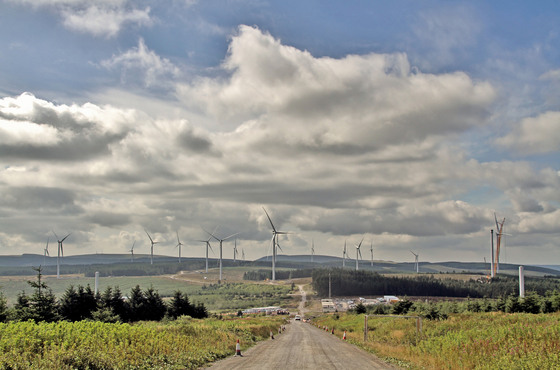The energy transition is walking the UK into a ‘two-tier economy’ where communities and businesses in whole regions of the country are left behind with higher bills and less access to new technologies.
That is the headline finding of a new report commissioned by the Drax Group, which asked researchers from Imperial College London and sustainability consultant E4tech to judge the national and regional progress towards a low carbon future.
It found that differences in levels of government investment, local policies and average household income have resulted in more affluent regions leading in the energy transition.
Will Gardiner, chief executive of Drax Group, said: “Great Britain needs more secure, clean energy to compete in the future economy. There is an energy revolution underway which will deliver it – but this report uncovers worrying regional divides as we go through that transition.”
London and Scotland were found to be ahead owing to low carbon transport and power generation respectively, with the latter boasting record levels of wind generation.
Meanwhile the capital has enjoyed 45% of national funds for rail electrification while electric vehicle ownership is deemed to be on average cheaper owing to shorter travel times, exemption from congestion charge zones and the growing number of public charge points.
Scotland was also found to be well prepared for a future of electrified transport, with the average Scottish household located around 2km from its nearest charging point.
Such regional changes are allowing these and other regions, including the east, south east and south west – where renewable generation has grown rapidly in recent years – to take the lead across power, transport and buildings.
To illustrate this, the report breaks down the ‘energy revolution’ into metrics for these sectors to provide ‘a barometer of national and regional progress’ and displays the regional divisions.
Regions deemed to be the most left behind were found to suffer from low energy efficiency compared to more affluent areas and will therefore see their bills impacted more from the electrification of heat – a likely feature of the UK’s future energy landscape.
Many of these regions are also home to the UK’s more traditional, and carbon emitting, generation technologies, as shown by the following composite image taken from the Energising Britain report, suggesting these regions often face significant air quality challenges.
The split in affluence between regions is also likely to result in less take-up of new technologies, with Londoners more likely to afford the higher upfront costs associated with an electric vehicle compared to others in the country.
What is called “a looming concern” is therefore the disparity between different regions, with some at risk of being left behind economically due to unaffordable changes.
“Britain risks creating a two-tier energy system, where some get ahead with the fuels and technologies of the future, while others are left behind with the higher costs, environmental and health problems that come from burning legacy fossil fuels – leaving millions of families and businesses less equipped to enjoy cheaper bills and better outcomes,” the report states.
Imperial’s Dr Iain Staffell added: “Our concern is they will not be offered the same opportunities as people living in regions which are modernising their energy infrastructure.”
Previously Drax has joined calls to government from the Northern Powerhouse Partnership to support Northern generators to provide low carbon electricity and flexible generation.
Meanwhile the Northern Energy Taskforce, set up by think tank IPPR North, has set a vision for the north of England to be a leading low carbon region by 2050, with an energy economy worth £15 billion per annum and 100,000 green jobs.
However, this would require substantial buy-in from industry and government to set up energy accelerators, provide test bed projects for the smart grid transition, devolve energy policy decisions to regional governments, and address decarbonising heat in particular.






